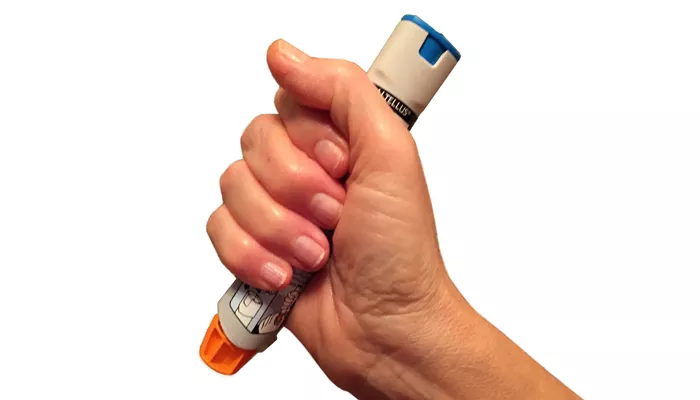Allergic reactions range from mild nuisances to life-threatening emergencies. While antihistamines and corticosteroids can manage minor symptoms, adrenaline (epinephrine) is the definitive treatment for severe allergic reactions, including anaphylaxis. This article explores the vital role of adrenaline in allergy management, how it works, when and how to use it, potential risks, and why it remains irreplaceable in emergency care.
Understanding Severe Allergic Reactions and Anaphylaxis
Allergies occur when the immune system overreacts to a normally harmless substance, treating it as a threat. Common allergens include:
Foods (peanuts, tree nuts, shellfish, eggs, milk)
Insect stings (bees, wasps, fire ants)
Medications (penicillin, NSAIDs, certain vaccines)
Latex
Exercise-induced allergies (rare but possible)
Most allergic reactions cause mild symptoms like itching, hives, or nasal congestion. However, in some cases, the reaction becomes systemic and severe, leading to anaphylaxis—a rapid, whole-body response that can be fatal without prompt treatment.
Signs of Anaphylaxis
Anaphylaxis typically involves two or more body systems and progresses quickly. Key symptoms include:
Skin: Widespread hives, swelling (angioedema), flushing
Respiratory: Wheezing, throat tightness, stridor (high-pitched breathing), shortness of breath
Cardiovascular: Rapid or weak pulse, dizziness, fainting (due to low blood pressure)
Gastrointestinal: Nausea, vomiting, diarrhea
Neurological: Confusion, sense of impending doom
Without immediate intervention, anaphylaxis can lead to airway obstruction, shock, cardiac arrest, and death within minutes.
Why Adrenaline is the First-Line Treatment for Severe Allergies
Adrenaline is a naturally occurring hormone produced by the adrenal glands. It plays a key role in the body’s “fight or flight” response. In severe allergic reactions, adrenaline works through multiple mechanisms to reverse life-threatening symptoms:
Constricting Blood Vessels to Prevent Shock
Anaphylaxis causes dangerously low blood pressure due to widespread vasodilation and fluid leakage. Adrenaline acts on alpha-1 receptors, tightening blood vessels and restoring circulation to vital organs.
Opening Airways to Restore Breathing
Swelling in the throat and bronchospasm can suffocate a patient. Adrenaline stimulates beta-2 receptors, relaxing airway muscles and improving oxygen flow.
Blocking Further Allergic Chemical Release
Adrenaline suppresses mast cells and basophils, stopping the release of histamine and other inflammatory chemicals that worsen the reaction.
Boosting Heart Function
By activating beta-1 receptors, adrenaline increases heart rate and strength, counteracting the cardiovascular collapse seen in anaphylaxis.
No other medication—not antihistamines, steroids, or inhalers—can match adrenaline’s rapid, life-saving effects in severe allergic reactions.
How and When to Use an Adrenaline Injection
Adrenaline must be given as soon as anaphylaxis is suspected. Delaying treatment increases the risk of fatal complications.
Dosage and Administration
Adrenaline is injected intramuscularly (IM) into the mid-outer thigh (vastus lateralis muscle) for fast absorption. The standard doses are:
Adults and children ≥30 kg: 0.3 mg (300 mcg) of 1:1000 solution
Children <30 kg: 0.15 mg (150 mcg) of 1:1000 solution
Auto-Injectors vs. Manual Syringes
For ease of use,adrenaline auto-injectors (EpiPen, Auvi-Q, Jext) are preferred in emergencies. They are designed for quick, foolproof administration:
Remove the safety cap.
Hold firmly and press into the outer thigh (can be done through clothing).
Hold in place for 3-5 seconds to ensure full dose delivery.
Manual syringe use is less common outside medical settings due to dosing errors but may be necessary in some cases.
When to Give a Second Dose
If symptoms persist or return after 5-15 minutes, a second dose may be needed. Some patients experience biphasic anaphylaxis, where symptoms recur hours later, requiring additional treatment.
Potential Side Effects and Risks of Adrenaline
While adrenaline is life-saving, it is a powerful drug with potential side effects, including:
Tremors, anxiety, or dizziness (from beta-2 stimulation)
Rapid heartbeat or palpitations (beta-1 effects)
Pale skin, high blood pressure (alpha-1 effects)
Rare but Serious Risks
Heart arrhythmias (especially in patients with heart disease)
Stroke or pulmonary edema (if given incorrectly in high IV doses)
Despite these risks, the benefits far outweigh the dangers in anaphylaxis. Not giving adrenaline is much riskier than giving it.
Common Myths and Misconceptions About Adrenaline
“Antihistamines can replace adrenaline in severe reactions.”
False. Antihistamines take too long to work and do not treat airway obstruction or shock.
“Adrenaline is too dangerous for non-medical people to use.”
False. Auto-injectors are designed for safe use by anyone in an emergency.
“If symptoms improve, no further medical care is needed.”
False. Biphasic reactions can occur, so hospital monitoring for 4-6 hours is recommended.
The Importance of Carrying and Using Adrenaline Promptly
Many deaths from anaphylaxis occur due to:
Delayed adrenaline use
Failure to recognize symptoms early
Not having an auto-injector available
Key Steps for Prevention and Preparedness
Always carry two adrenaline auto-injectors (in case of a severe or biphasic reaction).
Educate family, friends, and coworkers on how to recognize anaphylaxis and use an auto-injector.
Wear a medical alert bracelet if you have a known severe allergy.
Seek emergency help immediately after using adrenaline, even if symptoms improve.
Conclusion
Severe allergic reactions can escalate rapidly, and adrenaline is the only treatment that can reverse anaphylaxis in time. Patients at risk, along with their caregivers, must be prepared to act quickly. Public awareness, proper training, and wider access to adrenaline auto-injectors are essential to preventing unnecessary deaths.
Remember: If you suspect anaphylaxis—use adrenaline first, then call for help. Delaying treatment can be fatal, while prompt action saves lives.
Relative topics:
- Diarrhea: Causes, Symptoms & Treatment
- Is It Safe to Take Cold Medicine While Breast-Feeding?
- Worried About Using a Neti Pot? Here’s How to Use One Safely

